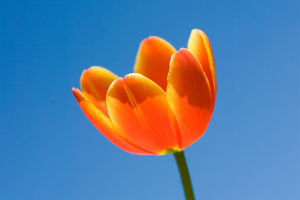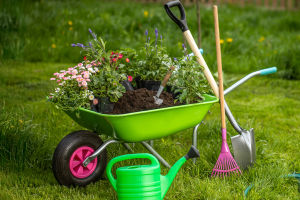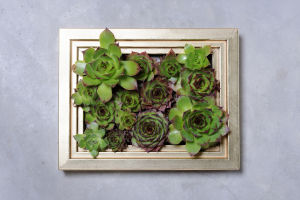Seed to Bloom
Have you ever stopped to think about the incredible journey a plant takes from a tiny seed hidden in the soil to a vibrant, blooming flower?
It's easy to see a fully grown plant and not realize just how complex and delicate the stages of growth really are.
But understanding this lifecycle—especially the early moments—can completely change how you garden and how successful your plants become.
Instead of rushing through this amazing process, let's take a closer look at a key moment that often determines the plant's future: seed germination. This phase is the starting point of life, where everything hinges on getting conditions just right.
Why Seed Germination Is the Most Crucial Step
A seed may look tiny and lifeless, but inside, it's packed with everything needed to start a new plant. Germination is the process that wakes this potential up. When a seed absorbs water, it triggers enzymes that start breaking down stored nutrients, allowing a tiny root—called a radicle—to push out into the soil.
This stage is incredibly sensitive. If the seed doesn't get enough moisture, it won't sprout. If it gets too much, it may rot or drown. Temperature is also key—most seeds need warmth to "know" it's the right time to start growing. If it's too cold, they stay dormant. The perfect balance of moisture and warmth ensures that the seedling will establish strong roots and healthy shoots.
Good germination means the plant has a strong start.
Early root development influences every stage after.
Poor germination often leads to weak or failed plants.
Plant scientist Dr. Emily Grant explains, "Many new gardeners don't realize how critical this stage is. Providing stable warmth and moisture is the single best way to increase seedling survival rates."
The Vegetative Growth Stage: Building Strength
Once the seed breaks through the soil, the plant enters the vegetative phase. During this time, it focuses on growing leaves and stems, which gather sunlight for photosynthesis—the process that fuels growth. A plant that develops healthy leaves here is better equipped to produce flowers later.
This stage calls for steady care. Overwatering or overfertilizing can harm young roots, so balance is important. The goal is slow, consistent growth. Strong stems and bright green leaves indicate a thriving plant ready for the next phase.
The Flowering Phase: Nature's Reproductive Strategy
Flowering is the plant's way of producing seeds and ensuring the next generation. This phase can take weeks or even years depending on the species. Environmental signals like daylight length and temperature changes often trigger blooming.
The flowers attract pollinators like bees and butterflies, which help transfer pollen. This natural process ensures seed production. Patience is essential here; flowering plants need consistent care and the right conditions to thrive.
How Knowing the Lifecycle Helps Your Garden Thrive
Focusing on seed germination and the early growth stages can make all the difference in gardening success. Here are some practical tips to help you along:
1. Choose fresh, high-quality seeds from reputable sources to improve germination rates.
2. Use a seed-starting mix that balances moisture retention and drainage to protect delicate roots.
3. Water gently—too much water can suffocate seeds, too little stops growth.
4. Keep seeds warm—if indoors, a heat mat can create the perfect environment.
5. Avoid rushing; give seeds time to germinate naturally for stronger seedlings.
Understanding these details turns gardening from guesswork into a science-backed art.
What's Your Plant's Story?
Thinking about your plants as part of a life cycle helps you appreciate the tiny steps behind each bloom or fruit. What part of this process do you find most challenging? Is it waiting for seeds to sprout or keeping young plants healthy? Sharing your experiences can help other gardeners—and even yourself—improve.
Remember, every tall tree or blooming flower started as a tiny seed with a fragile chance at life. With patience, the right conditions, and a little knowledge, you can help your plants tell their best story.
So next time you plant a seed, think about the amazing journey ahead—it's not just dirt and water; it's the start of life unfolding before your eyes.
What phase of your plant's growth do you pay the most attention to? Have you noticed a difference when focusing on seed germination? Let me know—because every gardener's story grows better with shared knowledge.
-
 Orange Tulip MeaningMore Than Just a Flower? The Hidden Meaning of Orange Tulips Will Brighten Your Day and Warm Your Heart!
Orange Tulip MeaningMore Than Just a Flower? The Hidden Meaning of Orange Tulips Will Brighten Your Day and Warm Your Heart! -
 Soil SecretsDiscover how matching plants to your soil type boosts growth and garden success.
Soil SecretsDiscover how matching plants to your soil type boosts growth and garden success. -
 Succulent CrazeUnlock the secrets behind succulents' popularity and expert tips to keep them healthy.
Succulent CrazeUnlock the secrets behind succulents' popularity and expert tips to keep them healthy.
Contact to : xyjph123@gmail.com
Privacy Agreement
Copyright © boyuanhulian 2020 - 2022. All Right Reserved.
Privacy Agreement
Copyright © boyuanhulian 2020 - 2022. All Right Reserved.